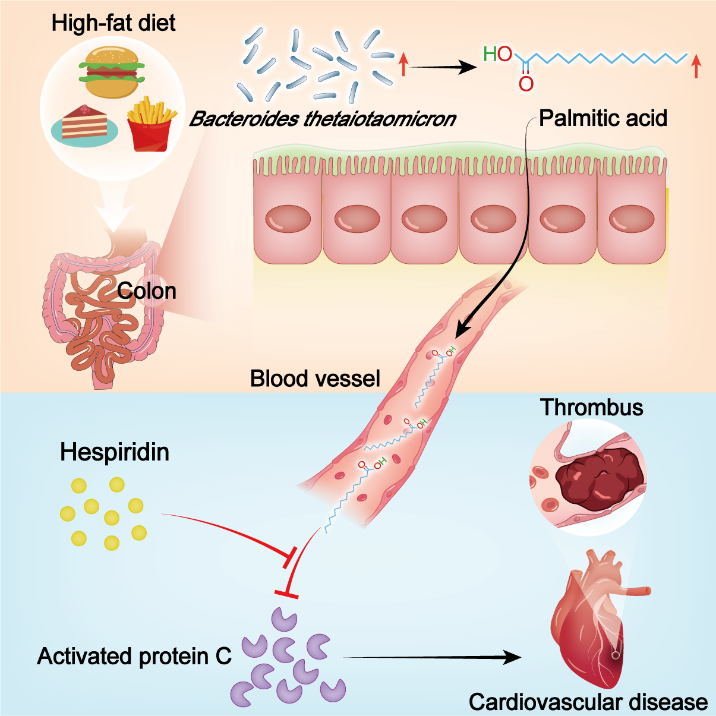A growing number of studies link gut microbiota to cardiovascular disease (CVD). Host diet and macronutrients are key mediators that link the interactions between host and gut microbiota. Circulating palmitic acid (PA) primarily originates from diet and endogenous synthesis, and elevated level is typically correlated with an increased risk of CVD. However, it is unknown if gut microbiota modulates circulating PA and thrombosis, which is the core pathological process in CVD.
A research team led by Prof. LAI Ren from the Kunming Institute of Zoology of the Chinese Academy of Sciences, in collaboration with Prof. NI Heyu from the University of Toronto, has found that high-fat diet increases circulating PA produced by gut BT to promote thrombosis. This study was recently published in Cell Reports Medicine.
In this study, significantly elevated level of circulating PA and hypercoagulation were observed in the group of patients with CVD. Furthermore, the relative abundance of BT was significantly higher in the CVD group, showing an approximate 2.18-fold increase compared to the healthy control group.
By screening the effect of PA on coagulant and anti-coagulant proteins, researchers found that PA acts as an inhibitor of APC, which is a key component in a physiological anticoagulant system. In addition, PA could promote platelet activation, which may subsequently affect platelet-mediated thrombosis. The procoagulant ability of PA was further confirmed in mouse models.
Then the metabolites of gut BT strains were analyzed, revealing that the BT strains were able to produce PA in vitro. Further research revealed that plasma PA level in BT transplanted-mice was significantly elevated, triggering a hypercoagulable state.
The dietary habits of the host directly impact the composition and function of gut microbiome. Notably, a high-fat diet promoted the colonization of BT in host, increased plasma PA levels of host, and then induced hypercoagulation.
As an abundant and economical dietary bioflavonoid, hesperidin blocked PA-APC interaction to prevent hypercoagulation induced by PA or BT transplantation, revealing a novel anti-coagulation mechanism of this dietary compound.
Therefore, the high-fat diet-gut microbiota-palmitic acid axis may reveal a novel pathophysiological mechanism associated with CVD risk.
This work was supported by the National Key Research and Development Program of China, the National Natural Science Foundation of China, Yunnan Provincial Science and Technology Department, New Cornerstone Investigator Program from Shenzhen New Cornerstone Science Foundation, among others.

The mechanism of the high-fat diet-gut microbiota-palmitic acid axis in thrombosis. Image by HUANG Xiaoshan
Contact:
HUANG Xiaoshan
Kunming Institute of Zoology, Chinese Academy of Sciences,
Kunming, Yunnan 650201, China
E-mail: huangxiaoshan@mail.kiz.ac.cn
